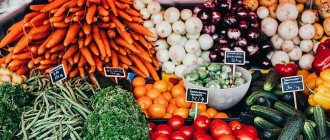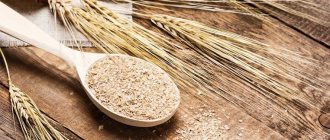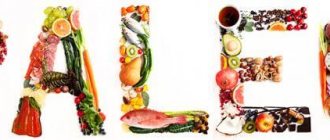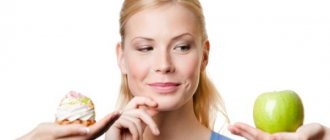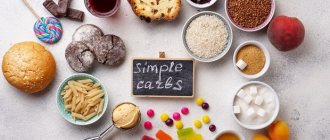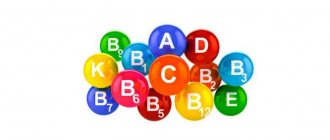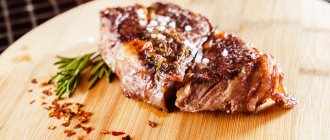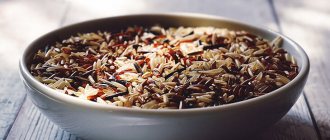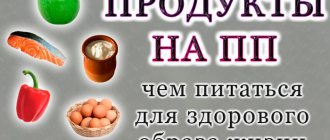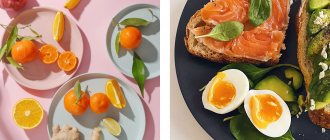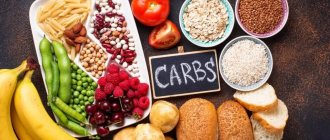The phrase “PN diet” alarms many, because it may turn out to be some kind of another dietary restriction that blows the roof off. In fact, proper nutrition is not about starvation and giving up tasty foods, but about limiting the consumption of unhealthy foods and proper distribution of nutrients throughout the day. Eliminating certain addictions will help bring your body into good shape without mental disorders. And most importantly, PP is a way of life, following which you will always look good while remaining healthy.
What is PP?
Proper nutrition is the rules for creating the most healthy menu, excluding harmful foods, and is also one of the principles of a healthy lifestyle.
A proper nutrition menu, first of all, should consist of foods balanced in micronutrient content that ensure the normal functioning of human organs and systems. Also, the diet should completely exclude harmful foods that disrupt these functions.
In addition, in most cases, proper nutrition is resorted to not because of health problems, but in case of excess weight, since the method helps to control and reduce body weight.
It must be emphasized that PN is not a short-term diet, which includes strict restrictions in foods, especially as a mono-diet, but nutritional principles that must be adhered to constantly, then the effect will be positive and long-term.
Boiled potatoes
Potatoes are not very popular in the world of healthy eating. But this vegetable has several properties that make it an ideal food for both weight loss and health maintenance. It contains an incredibly diverse range of nutrients, with a little bit of everything you need. There are even stories of people who lived on potatoes alone for extended periods of time. Potatoes are especially rich in potassium, which plays an important role in controlling blood pressure, but which we often don't get enough of. The Satiety Index table shows that boiled white potatoes rank first among other foods in terms of their effect on satiety. This means that by eating boiled potatoes, you will be full and eat less of other foods. If you cook potatoes and then let them cool, they form large amounts of resistant starch, a fiber-like substance that has been shown to have all sorts of health benefits, including increased weight loss (A. Nugent, “The Nutritional Benefits of Resistant Starch”). starch"). Sweet potatoes (yams), turnips and other root vegetables are also very healthy.
How to switch to PP: basic principles
Eliminate harmful foods
By “harmful” we also mean useless foods that clog the body with unnecessary or excess nutrients.
- First of all, you need to give up alcohol . We will not dwell in detail on the harmful effects of alcoholic beverages on the body.
- It is necessary to limit salt intake to 2 g per day. Excessive salt consumption leads to disruption of water-salt balance and fluid retention in the body. Therefore, swelling and puffiness are often caused by eating salty foods, including fast food.
- Fatty fried foods, animal fats, fast food products, refined oils are also subject to maximum exclusion. Not only is such food high in calories, it is also useless and dangerous for the health of the heart and blood vessels. If you can’t completely get rid of fats, you need to at least reduce their consumption to a minimum.
- Canned food, smoked meats, sugar, flour and confectionery products are also excluded from the diet first.
Balance your diet
From the list of permitted products, which is presented below ↓, it is necessary to correctly combine certain products for better absorption of nutrients and maintain gastrointestinal functions:
- Combine complex carbohydrates, such as grains, with vegetables and greens rather than proteins. To break down and assimilate carbohydrates, the pancreas needs to produce some enzymes, and for proteins - others. And since the body will need time and effort to absorb both substances, combining them at one time will worsen the functions of the digestive system and complicate the process of their breakdown. And taking fiber, cereals + vegetables, will not worsen digestion.
- For the same reason, it is better to eat proteins with vegetables and herbs.
- Fats within reasonable limits are best added to vegetable dishes in the form of unrefined vegetable oils.
Also on PP, the amount of proteins, fats and carbohydrates consumed is of great importance:
- Requirement for carbohydrates: 50-60% of the daily calorie content of foods.
- Proteins: 20-30% of total calories.
- Fats: 10-20% of total calories.
3. Consume nutrients in a timely manner
What matters here is not the frequency of intake and the duration of the gap between them, but the intake of each substance at the allotted time. So, in more detail:
- The best time to consume complex carbohydrates is the first half of the day, but no later than 16.00. This is due to the fact that carbohydrates release energy that the body spends on vital functions. Excess of this energy when consuming carbohydrates in the evening provokes the accumulation of these calories in the form of fat. Therefore, during PP it is important to have time to consume the energy from these carbohydrates.
- Proteins can be consumed at any time of the day, of course, not at night, but without harm to your figure they can be consumed in the evening or for a late dinner. Proteins do not accumulate in the form of subcutaneous fat, so the bulk of proteins should be consumed after 16.00.
- Fats can also be distributed evenly throughout the day, best used for preparing salads or vegetable dishes, and also added to porridge.
- It is better to finish even the lightest meal 2-3 hours before bedtime.
4. Drink enough fluids
Clean water is necessary not only for those who play sports, but for absolutely everyone who cares about their health.
- Firstly, water is a transport of nutrients.
- Secondly, it prevents blood thickening and the formation of blood clots.
- Thirdly, it supports and normalizes the functions of all organs.
Formula for calculating fluid requirements: 30 ml * body weight.
How to drink water correctly:
- Start your day with a glass of clean water. After half an hour you can have breakfast.
- Distribute the calculated amount of water in even doses throughout the day. A good way to dull the feeling of hunger and not break out is to drink a glass of water.
- Drink plenty of water throughout your workout and avoid becoming thirsty, which indicates dehydration.
- Do not drink water or any liquid at night, this will cause swelling the next day and lead to heaviness in the stomach when lying down.
Useful tips
Losing weight is a difficult process that requires time, dedication and willpower. Some people benefit from temporarily cutting back on daily calories, while others are unable to achieve the desired results even after years of dieting. It all depends not only on whether you add to your diet only what you can eat for weight loss from the PP list, but also on many other independent factors.
To help your body get rid of extra pounds, follow these simple recommendations:
- drink more fluids;
- exercise at least 2 times a week or at least try to move more;
- do cosmetic procedures for weight loss and skin tightening;
- follow the daily routine;
- take an additional vitamin complex;
- get enough sleep;
- try to avoid stress.
A normalized diet with a sufficient amount of vitamins and minerals, moderate exercise, perseverance and self-love will help you change your appearance for the better without problems or stress.
IMPORTANT ! Informational article! Before use, you should consult a specialist.
List of permitted products on PP
Sources of carbohydrates:
- Unpolished rice.
- Buckwheat.
- Oat groats.
- Pearl barley.
- Barley grits.
- Wheat groats.
- Millet.
- Durum pasta.
- Whole wheat bread.
- Rye bread.
- Vegetables.
- Beans.
- Fruits and berries.
Protein sources:
- Chicken and quail eggs.
- Lean bird.
- Lean meat.
- Fish and seafood.
- Dairy products: kefir, cottage cheese, low-fat cheese, low-fat yogurt and fermented baked milk.
- Mushrooms.
Sources of fats:
- Unrefined vegetable oils.
- Nuts.
- Sesame and other seeds.
Cruciferous vegetables
Broccoli is one of the cruciferous vegetables. Cruciferous vegetables include cabbage, broccoli and cauliflower. Just like other vegetables, they are rich in fiber and fill you up quickly. Moreover, cruciferous vegetables are a good source of protein. They do not contain as much protein as animal foods and legumes, but more than other vegetables. The combination of protein, fiber and low energy content makes cabbage an excellent fat-burning diet item. Cruciferous vegetables are also rich in vitamins, microelements and contain anti-cancer substances.
List of prohibited products on PP
- Alcohol.
- Fried foods in refined oils.
- Semi-finished products.
- Sausages.
- Canned food.
- Smoked meats.
- Salo.
- Cereals with a high starch content - semolina, corn.
- Potato.
- Vegetables and fruits with a high glycemic index.
- Bread and pasta made from premium quality wheat.
- Baked goods, sweets, cookies, chocolate.
- Sugar in its purest form.
- Dried and dried fish.
- Chips, crackers, etc.
- Carbonated drinks.
- Juices with high sugar content.
Partially prohibited foods that can be consumed periodically in minimal quantities:
- Cereals with a high glycemic index - white rice, corn grits, etc.
- Pork, lamb, duck.
- Salty fish.
- Refined vegetable oils, including butter.
- Potato.
- Berries and fruits with a high glycemic index - grapes, banana.
- Dried fruits, juices and honey.
- Milk.
Glycemic index of foods here →
Low-fat yogurt
Another great dairy product is yogurt. It contains probiotic bacteria that can improve gut health. A healthy digestive system helps protect against inflammation and leptin resistance, which is a major hormonal factor in the development of obesity. Just choose non-fat yogurt. In his work “The relationship between high consumption of fatty dairy products and obesity, cardiovascular and metabolic diseases” M. Kratz has convincingly shown that full-fat (low-fat) dairy products are associated with a reduced risk of obesity and type 2 diabetes in the long term. Low-fat yogurts usually have a lot of sugar added, so avoid products like fire.
The principle of compiling a weekly menu
These are simple rules that are easy to put into practice when creating a healthy menu for every day for many years.
- Don't skip breakfast , which is the main and highest calorie meal of the day. Of course, you shouldn’t overeat, but here you can afford complex carbohydrates - cereals, and simple ones - honey, fruits or dried fruits. You can also add light protein foods to breakfast, such as eggs or dairy products.
- Schedule your meals and don't skip them. When eating properly, it is also important to avoid starvation. Do not think that hunger is beneficial, except in the case of acute gastroenterological diseases. Fasting is a signal for the accumulation of adipose tissue. Therefore, provide your body with timely meals.
- Lunch can contain both complex carbohydrates and proteins. It is advisable to consider product compatibility. For example, combine cereals with vegetable salads or baked vegetables. Or meat and fish with the addition of vegetables in any form. The less vegetables are subjected to heat treatment, the better.
- The fourth meal is a light snack. Until 16.00 you can consume fruits and freshly squeezed juices, after - only low-fat protein foods and vegetables. Snacks may include dairy products, fruits, vegetables, and eggs. It is advisable to select fruits with a low glycemic index.
- Dinner should include mainly proteins - meat, fish, eggs, dairy products with the addition of vegetables. Vegetable salads can be seasoned with unrefined vegetable oils and seeds can be added.
- If necessary, you can have a late meal 2-3 hours before bedtime. It may include kefir, eggs, lean fish or meat.
- It is better to steam, bake, or boil dishes. Do not fry in oil.
Eggs
Previously, eggs were avoided because of their high cholesterol content. However, recently everything has changed. Recent studies show that eggs do not negatively affect blood cholesterol levels and do not lead to heart attacks. Moreover, they are one of the best foods for weight loss. Eggs are high in protein and healthy fats. They are very filling and low in calories. In 2008, J. W. Wander published an article in the international journal Obesity, “Egg Breakfast Enhances Weight Loss,” which cited data from numerous studies. Thus, one of them, which involved 30 obese women, showed that eating eggs for breakfast instead of sandwiches increased satiety and the amount of food eaten over the next 36 hours. According to another 8-week study, eggs for breakfast increased weight loss during a reduced-calorie diet (compared to sandwiches). Eggs are a real storehouse of nutrients. They will give you everything you need during your fat burning diet. Moreover, the yolks contain almost all the necessary vitamins, macro- and microelements.
Examples of PP menus for every day
Breakfast options on PP for weight loss
- Oatmeal with milk.
- Egg omelet.
- Whole grain bread with low-fat cheese.
- Cottage cheese with dried fruits.
- Flourless cottage cheese casserole with fruits or berries.
PP breakfast recipes in video format
Lunch options at the checkpoint
- Brown rice and steamed vegetables.
- Baked chicken, salad.
- Buckwheat with mushrooms.
- Steamed or oven-cooked fish, vegetables and herbs.
- Durum noodle soup in meat broth.
PP lunch recipes in video format
Snack options at the checkpoint
- Kefir with banana.
- Cottage cheese with raisins.
- Milkshake with berries.
- Whole grain bread with cheese or soft cottage cheese.
- Low-fat yogurt or fermented baked milk.
PP snack recipes in video format
PP dinner options for weight loss
- Baked hake or pollock with beets and carrots.
- Boiled beef with cabbage salad dressed with butter.
- Seafood salad, omelette.
- Boiled squid, eggs.
- Stewed vegetables with meat.
PP dinner recipes in video format
Recipes
To lose weight, choose the lowest-calorie, dietary meat dishes. You can take several recipes as a basis.
- Chicken stewed with tomatoes
Cut 200 g of skinned chicken breast into portions. Blanch 100 g of tomatoes and blend in a blender. Grind 1 small onion, pass 1 medium-sized carrot through a grater. Place the chicken pieces in a thick-walled pan first, then the tomato puree, carrots and onions. Add salt and pepper. Pour in 300 ml of hot water. Simmer over low heat until done.
- Turkey salad
Boil 300 g of turkey breast (without salt and skin). Cool, put into straws. Roughly chop 2 tomatoes and 2 (yellow and red) bell peppers. Cut 75 g feta cheese into small cubes. Mix all ingredients, season with 1 tbsp. l. olive oil.
- Veal in the oven
Crush 5 g of black pepper and ground chili, 15 g of thyme in one mortar. Cut 1 kg of fresh veal into portions, rinse, dry, and roll in prepared spices. Mix 20 g of melted honey, 100 ml of natural cherry juice and 50 ml of vintage cognac. Dip the meat into this marinade and cover with a lid. Keep at room temperature for 1 hour, in the refrigerator for 1 hour. Pour the marinade into a special baking sleeve, put some grated carrots there, and place pieces of marinated veal on top. Bake at 170°C for an hour.
The effect of proper nutrition on weight loss
Benefits of PP for weight loss:
- First of all, it is a rejection of harmful and high-calorie foods that contribute to the accumulation of excess subcutaneous fat. Already in the first week you will notice how the exclusion of such foods reduces body volume not only due to fat, but also excess fluid.
- Correct distribution and balance of BZHU will allow the body to receive all the necessary nutrients and not accumulate excess. Consumption of the right foods will allow you to maintain all the functions of the body; accordingly, you will consume less food “garbage”, which only temporarily signals the brain about satiety or is stored as fat, no more.
- Timely consumption of nutrients has the best effect on weight loss, because giving up carbohydrates in the afternoon will allow the body to spend the energy accumulated from carbohydrates in a timely manner and not accumulate it in the fat depot. By adhering to this rule, you can easily control your body weight without giving up your favorite foods, simple carbohydrates, in the first half of the day. Thus, at the end of the day there will be an energy deficit, which the body will replenish from fat.
Rules for successful weight loss
To lose weight, you don’t need to torture yourself and your body with strict mono-diets, because most often they do more harm than good. Proper nutrition with a regulated diet and regular meals will allow you to lose weight without sacrifice, while your health will only benefit.
Before moving on to studying nutrition issues, let’s remember the basic rules for losing weight:
- Give up bad habits - alcohol, tobacco products, coffee, frequent consumption of fast food cannot in any way be associated with PP, much less help in losing weight. Therefore, when deciding to change yourself, start with bad habits.
- Replacing fast carbohydrates with slow ones means giving up heavy foods rich in so-called fast carbohydrates, healthy products of slow digestion. Eating slow carbohydrates allows you not to store food in fats, but to use it to meet the body's needs.
- Optimal drinking balance - no diet will give the desired result if the body is dehydrated; the body needs water for fast work and normal processing of food. By neglecting it, you disrupt the digestion processes and gain weight.
- Eat slowly and carefully - it may sound stupid, but many people rapidly gain weight not so much because of an unbalanced diet, but because of the constant rush. Chewing food thoroughly will not only transmit satiety signals to the brain, but will also improve its digestion.
There is nothing scary or repulsive about proper nutrition. There are quite a lot of acceptable foods for weight loss, so you don’t have to suffer from a lack of your favorite sweets. The PP nutrition rules are simple and easy to follow even for beginner dieters, and with the right approach they will help change your body and life for the better.
Coconut oil
Not all fats are the same. Coconut oil is rich in medium-chain fatty acids (so-called medium chain triglycerides). These fatty acids have been shown to increase satiety compared to other fats and also increase the number of calories burned. Coconut oil leads to reduction of belly fat. Of course, coconut oil is high in calories, so eating more than what you already eat is a bad idea. So, it's not about adding coconut oil to your diet, but replacing it with some other cooking fats. Extra virgin olive oil is also worth mentioning because it is probably the healthiest fat on the planet.
Chia seeds
Chia seeds are among the most nutritious foods on earth. They contain 42 grams of carbohydrates per 100 grams of product, which is quite high, and 34 grams of them are fiber. This makes chia a low-carb food and one of the best sources of fiber in the world. Because of this amount of fiber, the seeds can absorb 11 to 12 times their weight in water, becoming gel-like and expanding in the stomach. Although some studies have shown that chia seeds help reduce appetite, they have not found a statistically significant effect on weight loss. Despite this, given the nutritional content, it is advisable to include chia seeds in your fat loss diet.
Fruits
Fruits are an excellent source of carbohydrates. Most nutrition experts agree that fruit is a healthy food. Numerous population studies have shown that people who eat the most fruits (and vegetables) tend to be healthier than those who don't. Of course, correlation does not equal causation, so these studies don't actually prove anything, but fruits have properties that make them one of the best foods for weight loss. Even though fruits contain sugar, they have low energy value and take time to chew. Additionally, fiber helps prevent sugar from being released into the bloodstream too quickly. The only people who want to avoid or minimize their fruit intake are those on very low-carb, ketogenic diets, or those with fructose intolerance. For others, fruit can be an effective (and tasty) addition to a weight loss diet.
Chilli
Eating chili peppers may be beneficial for weight loss. This pungent vegetable contains a substance called capsaicin, which was shown in the study “The Effect of Capsaicin on Substrate Oxidation and Weight Maintenance Following Moderate Body Weight Loss in Humans” (M. Lejeune et al., 2004) to help reduce appetite and increase fat burning. Capsaicin is often used as one of the main ingredients in many sports nutrition products. Consuming 1 gram of red chili pepper reduces appetite and improves fat burning in people who do not regularly consume pepper. However, no effect was found in those who regularly eat spicy foods, indicating addiction in the body.
Grapefruit
Grapefruit has been repeatedly studied in terms of its effect on fat burning. In K. Fujioka's study, "The Effect of Grapefruit on Weight and Insulin Resistance: Relevance to Metabolic Syndrome," which involved 91 overweight people, eating half of the fruit before meals resulted in a loss of 1.6 kg in 12 weeks. A group of participants who consumed grapefruit also showed a decrease in insulin resistance, a metabolic disorder associated with various chronic diseases. Thus, eating half a grapefruit half an hour before meals will help you feel full faster and consume fewer calories.
